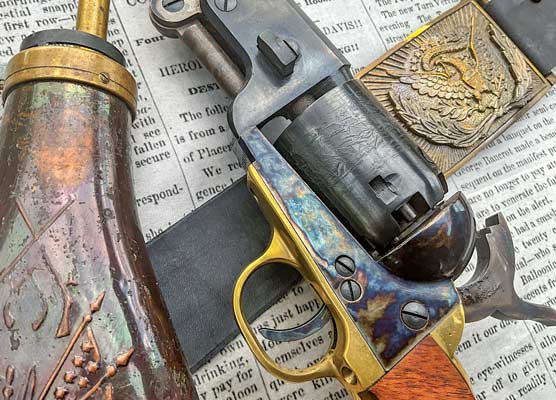U-1206: The U-boat
That Was Sunk by a Toilet
World War II saw the most profound technological advancements in military history. That’s where we got assault rifles, jet combat aircraft, ballistic missiles, and nuclear weapons. WWII also saw the widespread employment of submarines.
The modern combat submarine was really introduced during the First World War. The sinking of the Lusitania by U-20 in May of 1915 helped make WWI a truly world war. However, the world really didn’t get good at submarine warfare until the 1940s.
Technical Challenges
Building a functional and effective transoceanic submarine involved solving literally countless little problems. Figuring out how to let some fifty guys eat, sleep and breathe for weeks on end, both on the surface and submerged, while simultaneously sinking Allied shipping was a Gordian chore. One of those countless little problems was what to do with human waste.
That seems pretty straightforward on the surface. The ocean is a pretty big place. Most submarines, in general, and U-boats, in particular, carried a wastewater tank much like that of a modern RV. In quiet moments, sailors would simply pump the tank empty straight into the sea. However, these tanks took up weight and space, both of which were at a premium on subs. As a result, German naval engineers contrived a solution.
The answer was a high-tech series of high-pressure valves. Once a sailor did his business, he could direct the waste overboard by opening and closing these valves, even while cruising submerged. That was great, but the system was complicated. So much so that there was a guy on board whose job was to safely flush the commode. I can only imagine how that discussion with the recruiter went. Be all that you can be …
Nature Calls
U-1206 was a Type VIIC boat launched toward the end of the war. It had all the latest bells and whistles, including a snorkel and a fancy submerged toilet. After a very brief shakedown, U-1206 launched on its first combat patrol on April 6, 1945, under the command of Kapitanleutnant Karl-Adolf Schlitt. Eight days later, while cruising submerged at 200 feet, Captain Schlitt needed to take a dump.
Service as a submarine commander is one of the most challenging jobs available for a military officer. You operate for long periods without contact with higher headquarters and are expected to be able to seize the initiative. Sub commanders are unrepentant type A individuals. In this case, Cpt. Schlitt figured he knew how to use his own toilet. Only he didn’t.
This was an admittedly complicated piece of kit. Once he got flummoxed, Cpt. Schlitt called for the toilet flushing guy. He quickly explained the problem, but the toilet operator misunderstood the details. He operated the valves in the wrong sequence and allowed a deluge of seawater and sewage to flow back into the boat through the toilet. Gravity still being in effect, all this foul stuff promptly flooded the battery compartment. These batteries were never intended to get wet. Once the batteries flooded, they began to give off great volumes of toxic chlorine gas. Chlorine gas was used as a chemical warfare agent during WWI. Cpt. Schlitt had to either surface his boat or see his entire crew asphyxiated.
It Gets Worse
April 1945 was a hard time to be a U-boat crewman. While the early years of the war saw unfettered success against Allied shipping convoys, by mid-1945, the Allies had invested vast resources in countering the U-boat threat. Surface vessels, jeep carriers and long-range patrol planes scoured the combat zones searching for U-boats.
U-1206 was in quite a state. The crew had to jettison the ready torpedoes to establish positive buoyancy, given the extensive flooding. As soon as they reached the surface, they opened all the hatches and turned on the fans in an effort to clear the deadly gas. It was in this awkward configuration that they were discovered by a British patrol plane.
I couldn’t find a specific reference to the type of British aircraft involved, but they were most frequently at this point in the war American-made B-24 Liberators. These massive four-engine bombers typically carried radar systems to aid in locating submarines as well as aerial depth charges to assist in killing them. This plane rolled hot on U-1206 without hesitation. Cpt. Schlitt knew he was doomed.
A Costly Mistake
One German sailor was killed in the attack. A further three drowned, trying to reach the shore. The remaining 46, including Cpt. Schlitt were made prisoners of war by the British.
Sinking your own U-boat because you couldn’t figure out how to flush the toilet just looks bad. Cpt. Schlitt subsequently denied any role in the sinking despite reports from his crew to the contrary. His official report said, “I was in the engine room, when at the front of the boat there was a water leak. What I have learned is that a mechanic had tried to repair the forward WC’s outboard vent. I would say — although I do not have any proof — that the outer vent indicator either gave false readings or none at all.” Who knows?
Kapitanleutnant Karl-Adolf Schlitt survived a three-year internment and eventually went home to study law. He worked in a variety of public service roles over his long career after the war, eventually dying of natural causes in 2009 at age 90. Schlitt carried with him the distinction of having been the only U-boat skipper to lose a submarine due to a misadventure with the toilet.







